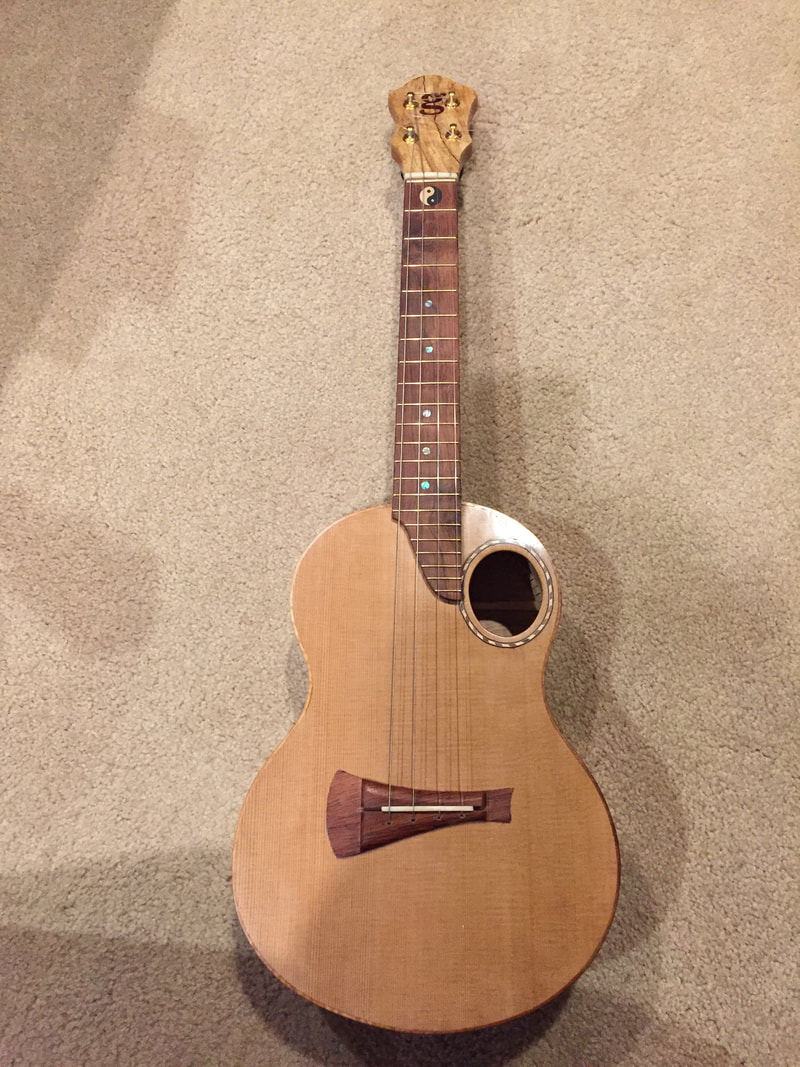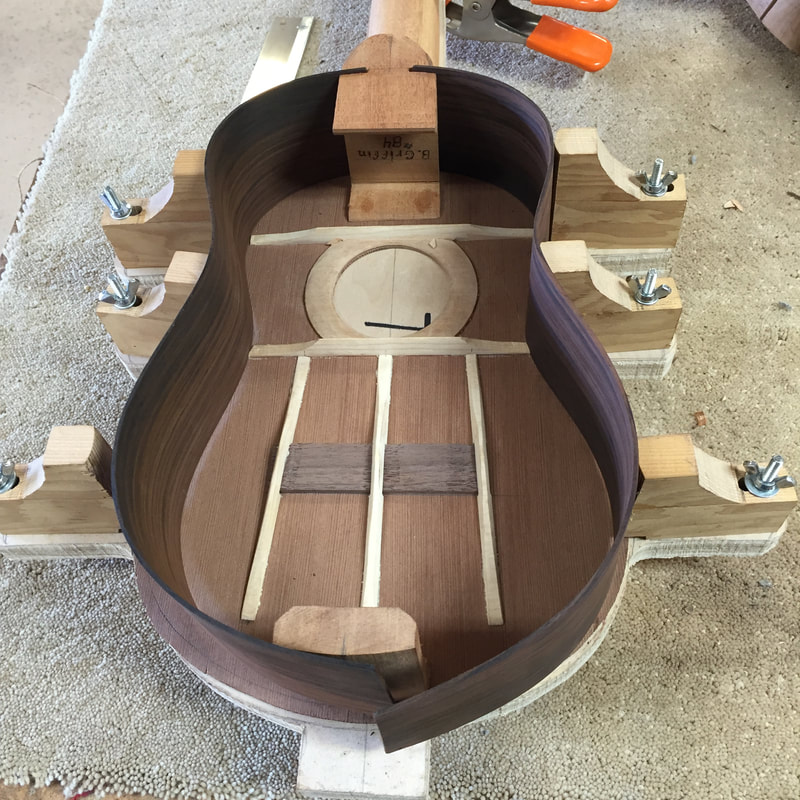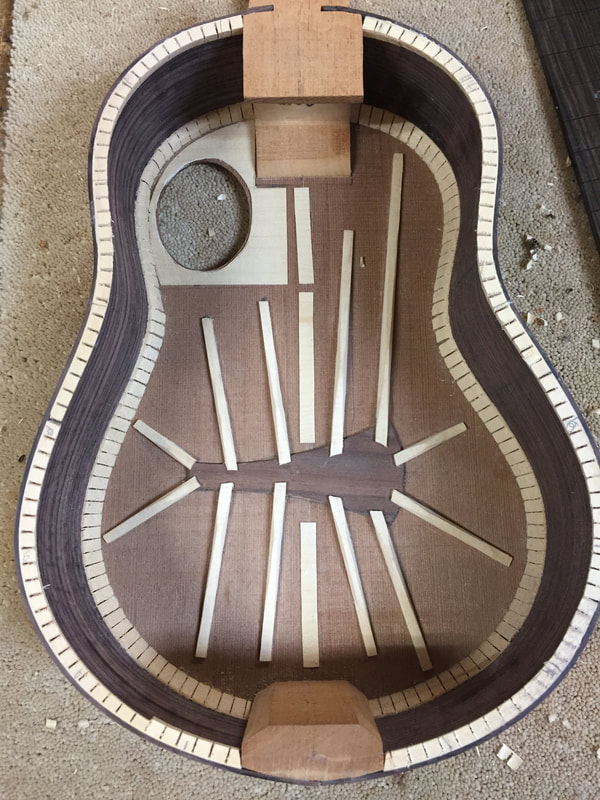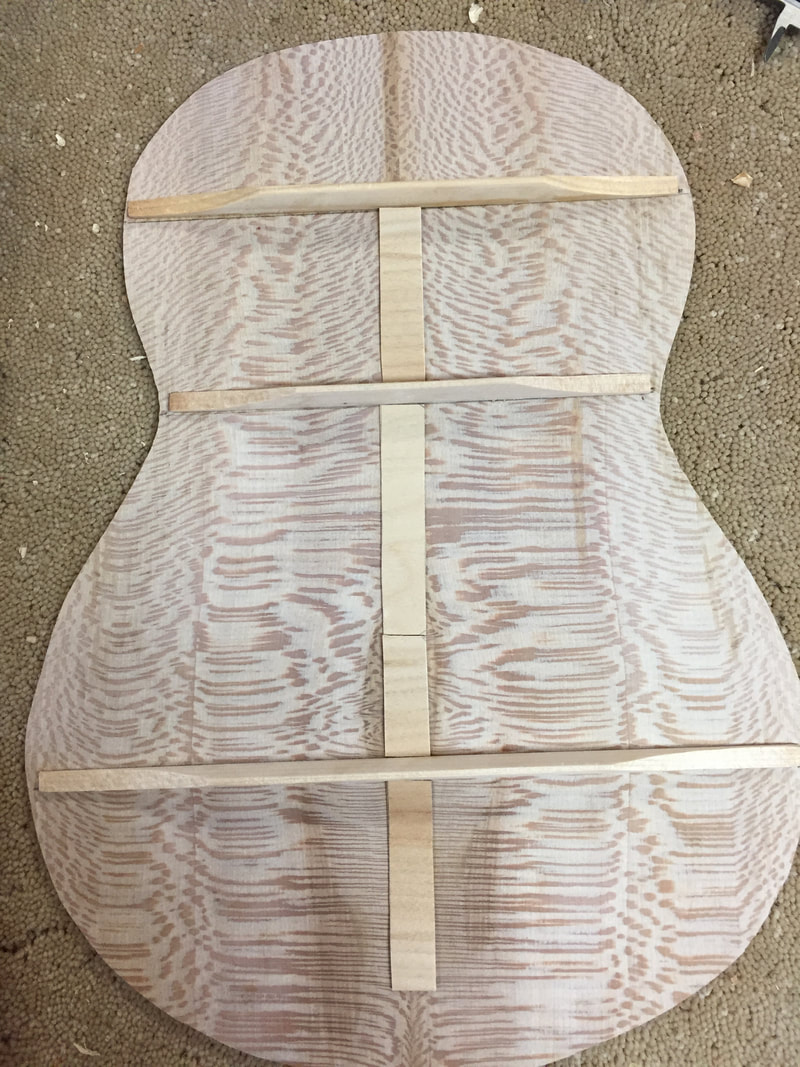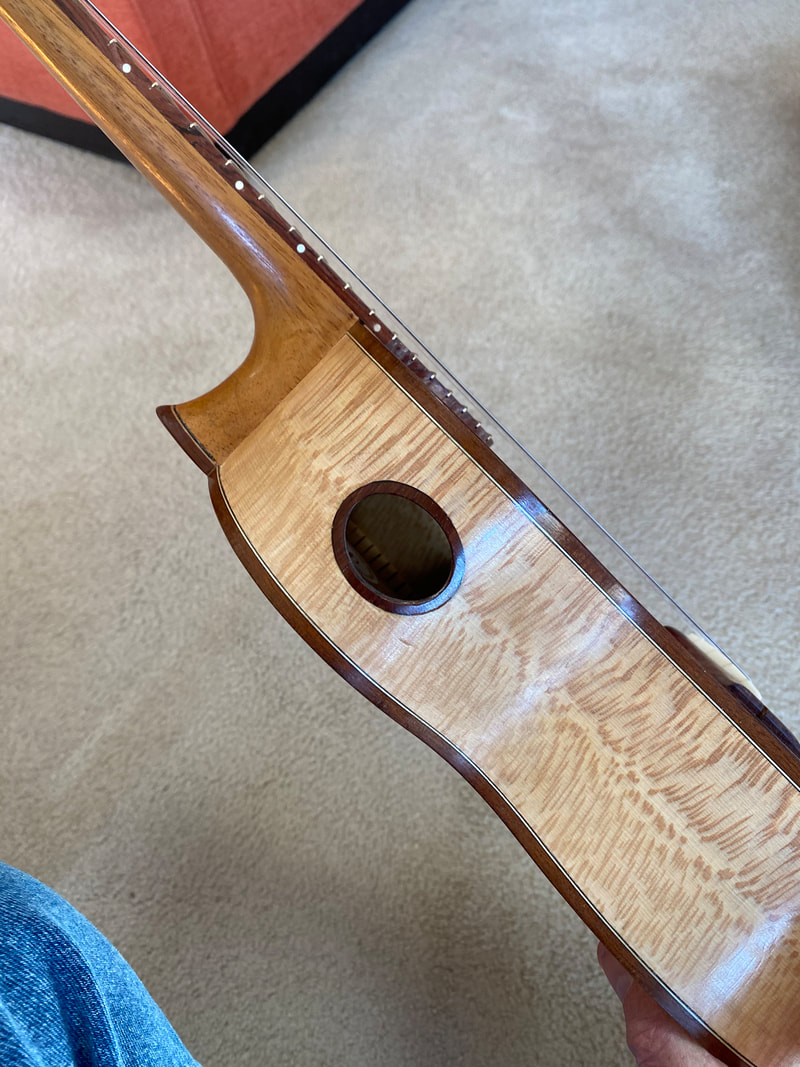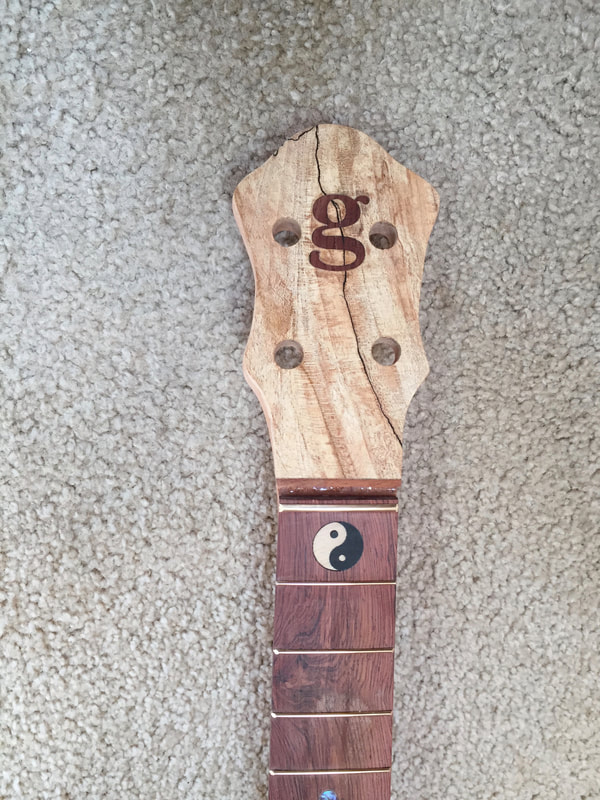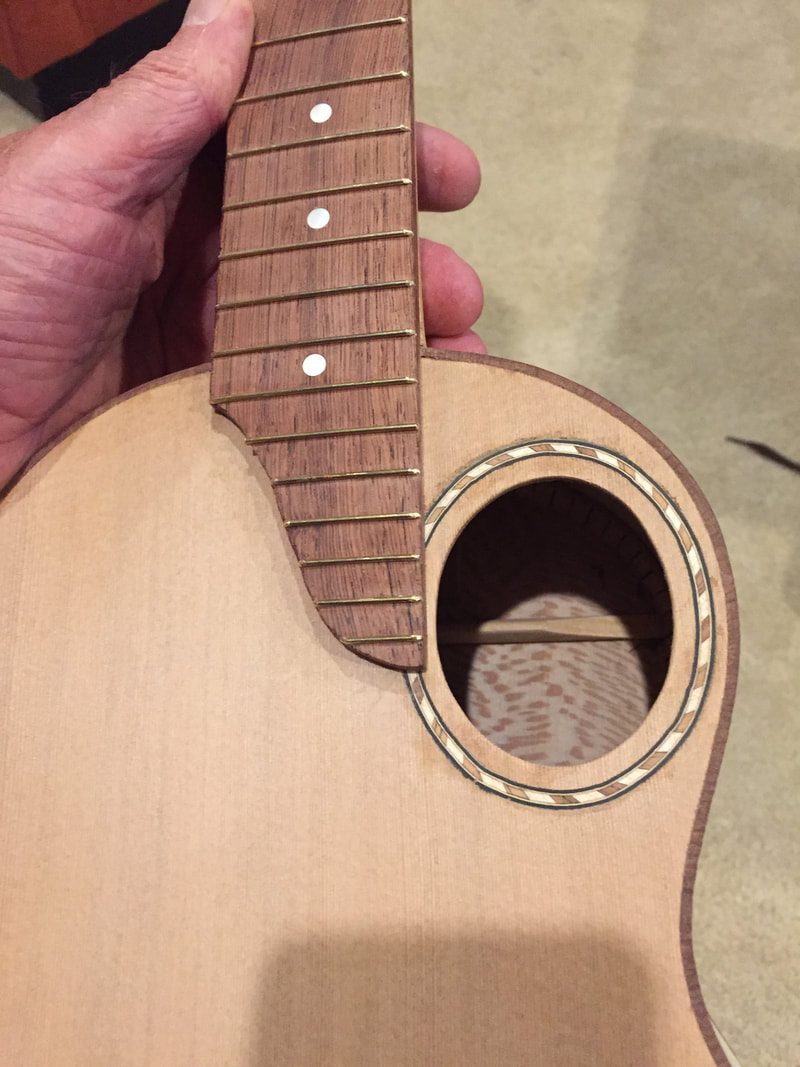That 100th uke was terrific, made with East Indian Rosewood and NYC water tank Redwood, the sound was rich, warm and powerful. I have now made 39 Kasha tenors. I am ceonvinced that it is a superior bracing system resulting in better sounding instruments. Nationally known Stuart Fuchs played that 100th instrument and asked me to build one just like it for him. He has been touring and using it on his Patreon website now for almost two years. He apparently agrees, Kasha is a great design.
HERE IS HOW IT BEGAN;
Michael Kasha was a Physicist at a Florida university. He bought his son a guitar and became interested in the acoustics of stringed instruments. He determined that his son's guitar construction was inefficient and began a study to improve instrument design. He teamed up with a famous luthier, Schneider and the the result was the bracing system that I am now devoted to
| Traditional ukulele bracing looks like this. A sound hole in the center of the top bout supported by two braces which extend across the bout from side to side. This leaves very little wood to vibrate in the upper part of the instrument. Most of the sound must be produced by the lower bout and its three tone bars. Kasha also learned that the bass strings should be braced differently than the treble strings. Traditional bracing treats all strings the same. |
| Kasha bracing looks like this. Twelve thin tone bars emanate from a trumpet shaped brace all of which braces the bass strings more heavily than the trebles. The bridge brace mimics the shape of the bridge. The sound hole is put up in the corner close to the side. The result is that much more of the entire soundboard is able to vibrate and create sound. Very thin maple veneer is used around the sound hole and up the center glue seam on this two piece top as insurance against cracks or splits. They impede vibration very little. Note that none of the tone bars extend to the side of the instrument, thus the entire top can vibrate. |
| The back of the instrument is braced in the traditional way with three cross braces of Sitka Spruce. Because this is a two piece back, veneer patches reinforce the glue seam. The back of an instrument has much less influence on its sound although still important as a reflector. It can be heavier and less vibratory. |
| SIDE SOUND PORTS I am also an advocate of side sound ports and put them into all of the instruments I build. Their major virtue is that they direct some of the instruments sound to the player. That is an advantage even when playing by yourself, but it becomes a huge advantage when playing in a large group. There is no affect noticeable on the tone of the instrument, and they may increase the volume a bit. |
| THE ZERO FRET Notice just below the slot where the nut will go there is a large fret. That is called a Zero Fret and it replaces the nut's function of being the place where the string starts, The nut will be placed in the slot above it but its only function is to separate the strings, not to regulate the height of the string above the fretboard. The zero fret must be considerably larger than the rest of the frets to get the strings the proper distance above those frets. I have found the zero fret makes setting the action a bit easier than filing the notches in the nut to just the right depth. The strings all start at the same height. The Yin/Yang is Stu Fuch's idea. I kind of like it but it is surely not mandatory on my instruments. |
